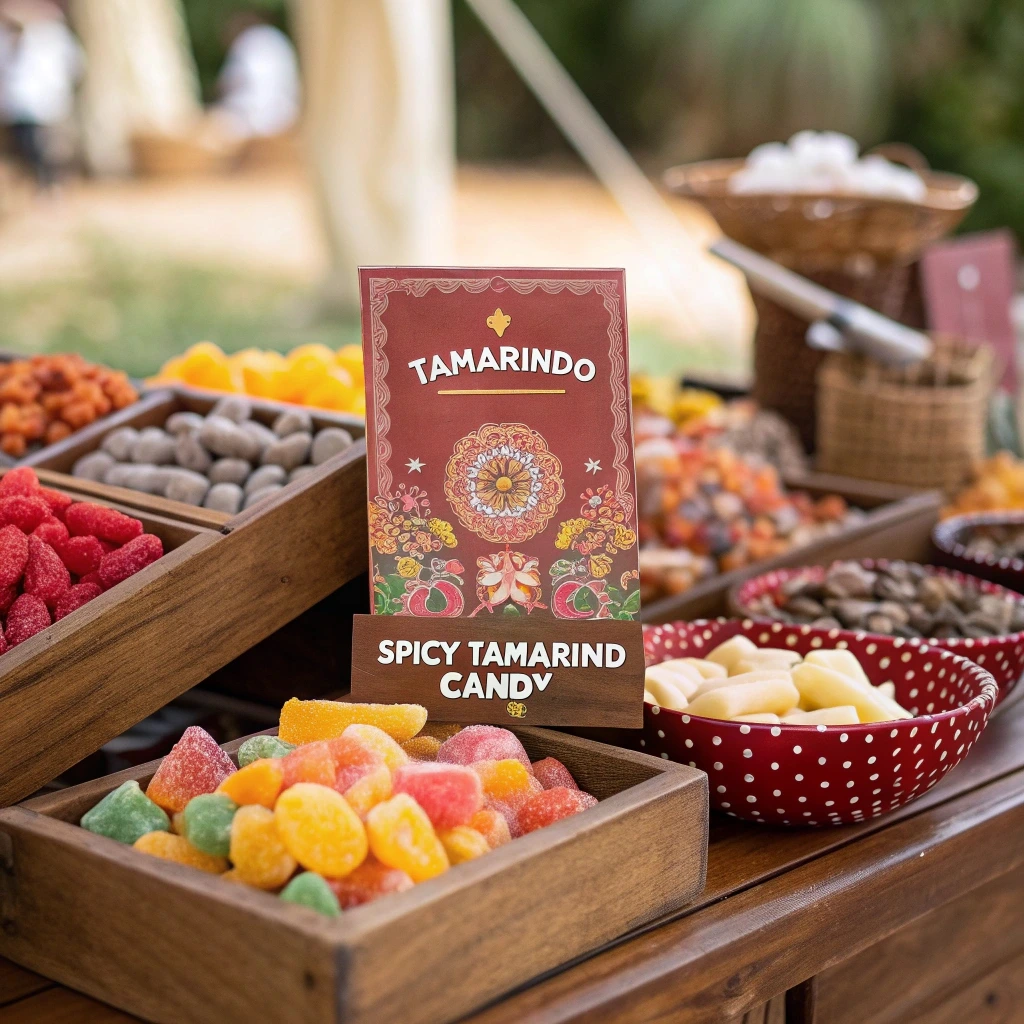Few candies in the world can take your taste buds on a ride quite like tamarind candy. It’s sweet, sour, and sometimes fiery — all at once. From Mexican “Pulparindo” bars to Thai tamarind balls and Vietnamese “Keo Me,” this tangy delight is more than just a sugary snack. It’s a cultural icon, a nostalgic bite of childhood, and for many, an unforgettable flavor experience.
In this article, we’ll explore what makes tamarind candy so special, its fascinating global journey, the way it’s made, where to find it, and even how to make it yourself. We’ll also dive into its nutritional value, health-related concerns, and traditional uses beyond the candy aisle. Whether you’re already hooked or curious to try it, this guide’s your all-access pass to the spicy-sweet world of tamarind treats.
Table of Contents
Introduction to Tamarind Candy
What Is Tamarind Candy?
Tamarind candy is unlike any other sweet you’ve ever tasted. It’s made from the sticky pulp of the tamarind fruit — a tropical pod with a tart, tangy flavor — and mixed with sugar, salt, and sometimes chili powder. The result? A complex, mouth-puckering treat that hits sweet, sour, salty, and spicy notes all in one chewy bite.
While the ingredients may sound simple, the flavor is anything but. Depending on where it’s made, tamarind candy can come in many forms — soft paste, chewy balls, hard sticks, or even gooey pulps stuffed in plastic tubes. One bite can transport you straight to a bustling street market in Bangkok or a sun-soaked plaza in Mexico City.
Why Tamarind Candy Is Gaining Popularity
In recent years, tamarind candy has seen a surge in popularity outside its traditional markets. Thanks to social media food trends, global fusion cuisine, and a growing love for bold, exotic flavors, people everywhere are discovering this sweet-and-sour gem. Moreover, nostalgic adults who grew up with Mexican sweets or Asian sour candy are rekindling their love for it — and introducing it to a new generation.
In addition, specialty stores and online marketplaces have made it easier than ever to get your hands on tamarind goodies. Therefore, whether you’re craving a spicy kick or a sugary trip down memory lane, tamarind candy delivers.
A Flavor Like No Other – Understanding Tamarind
What Is Tamarind Fruit?
Tamarind comes from a tropical tree that produces long, brown pods filled with sticky, tangy pulp. At first glance, it might not look like much. However, once opened, the rich, dark paste inside delivers a taste that’s both sour and sweet — sometimes intensely so. That bold flavor is what makes tamarind candy so irresistible to fans around the world.
The fruit is native to Africa but now grows in many warm regions, including India, Thailand, and Mexico. In its raw form, it’s often used in curries, soups, and sauces. Yet, when sugar and spices are added, it transforms into something entirely different: a candy that dances between bold and balanced.
What’s fascinating is how tamarind’s tangy edge naturally complements sweetness. Therefore, it becomes a perfect base for making mouthwatering treats. It’s no surprise then that tamarind candy is beloved in cultures that appreciate layered, adventurous flavors.
The Tangy-Sweet-Spicy Combination Explained
So, why is tamarind candy so addictive? For starters, it engages every part of your palate. The sweetness comes from cane sugar, while the sour zing comes directly from tamarind pulp. In many regions — especially in Mexican tamarindo candy — chili powder is also added, giving the candy a spicy twist that adds even more depth.
This trifecta of taste is hard to find in other sweets. Moreover, the gritty, chewy texture only heightens the sensory thrill. For example, in Thailand and Vietnam, tamarind balls are rolled in salt and sugar, sometimes with crushed chili flakes. As a result, you get a flavor explosion that keeps you reaching for more.
In short, it’s not just candy. It’s an experience.
The Origins and Cultural Roots of Tamarind Candy
Tamarind’s Global Journey – From Africa to Asia and Latin America
The story of tamarind candy begins with the fruit itself — tamarind — which has journeyed across continents for centuries. Originally native to tropical Africa, tamarind trees were brought to India and Southeast Asia over 1,000 years ago. Later, Spanish and Portuguese explorers carried it to Latin America, especially Mexico and the Caribbean.
Interestingly, the word “tamarind” comes from the Arabic phrase “tamar hindi,” which means “Indian date.” This nickname stuck, even though the fruit is quite sour compared to actual dates. Over time, tamarind became a pantry staple across the globe, valued not only for its taste but also for its long shelf life in hot climates. As a result, cultures began using it in every way imaginable — from savory stews to soothing herbal remedies.
Eventually, someone had the brilliant idea to mix tamarind pulp with sugar and spices. Voilà — tamarind candy was born.
How Tamarind Became a Staple in Candymaking
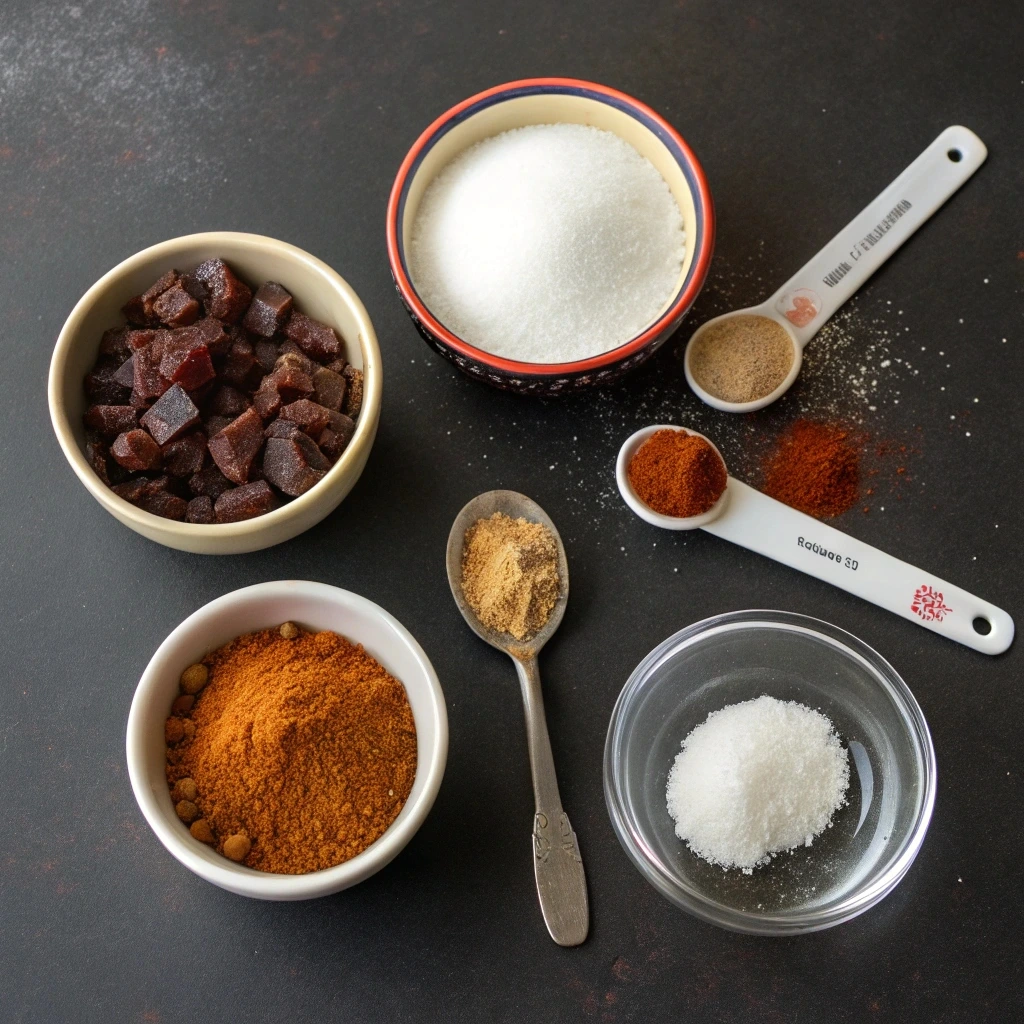
Southeast Asia also has its own versions. In Vietnam, the candy is called “Keo Me,” which directly translates to “sour tamarind.” It’s usually made by hand, with families using passed-down recipes that balance tartness, sweetness, and heat just right.
What all these versions have in common is their respect for balance. Tamarind is intense, but when paired with the right amount of sweetness and spice, it becomes something magical.
Here’s a look at the basic ingredients often used across cultures when making tamarind candy:
| Ingredient | Quantity |
|---|---|
| Tamarind Pulp | 1 cup (seedless) |
| White Sugar | ½ cup |
| Chili Powder | 1–2 teaspoons (optional) |
| Salt | ½ teaspoon |
| Water (if needed) | 1–2 tablespoons |
As you can see, the recipe is simple — but the flavor? Absolutely unforgettable.
Regional Variations and Popular Types of Tamarind Candy
Mexican Tamarindo Candy and Its Bold Flavors
In Mexico, tamarind candy isn’t just a treat — it’s a cultural staple. You’ll find it in corner stores, markets, and candy carts everywhere, often under names like Pulparindo, Pelon Pelo Rico, and Tamaroca. These versions are famous for blending tamarind pulp with sugar, salt, and lots of chili. As a result, every bite brings heat, tartness, and a lingering sweetness that makes you crave more.
Mexican tamarindo candies are also playful in design. Some come in squeezable bottles, while others are wrapped in wax paper like toffee. Because they combine fun packaging with intense flavors, they’re especially popular with kids and snack-loving adults alike.
Moreover, you can find unique variations that include tamarind with mango or pineapple, giving the treat a tropical twist. These sweets are usually part of Mexican celebrations, fiestas, or even piñatas — they’re just that beloved.
Tamarind Candy in Southeast Asia
Southeast Asia also offers an impressive lineup of tamarind candy. In Vietnam, it’s known as keo me, which directly translates to “sour tamarind.” These candies are soft, chewy, and often rolled in sugar and chili flakes. Some include roasted peanuts for a delightful crunch.
In Thailand, makham wan (sweet tamarind candy) often takes the form of round balls rolled in sugar and dried. Unlike their Mexican counterparts, they’re milder in spice but just as bold in tang. Similarly, in the Philippines, sampalok candy combines mashed tamarind with muscovado sugar and is dusted with salt.
Each region adds its own spin, yet the base flavor — tamarind’s sour tang — remains the star. Therefore, whether you’re trying Asian sour candy or Mexican sweets, the experience is always unique.
For more fruity and fun dessert ideas, you might enjoy this easy fried bananas recipe from our friends at PopinRecipes — it’s another tropical treat you’ll love!
How to Make Tamarind Candy at Home
Simple Tamarind Candy Recipe (Step-by-Step)
Making tamarind candy at home is easier than you might think. All it takes are a few pantry staples and a bit of patience. Therefore, if you’re feeling creative, skip the store-bought version and try this recipe below.
Here’s a basic recipe that captures the sweet, sour, and spicy magic of traditional tamarind treats:
| Ingredient | Quantity |
|---|---|
| Tamarind Pulp | 1 cup (seedless, packed) |
| White Sugar | ½ cup |
| Chili Powder | 1–2 teaspoons (adjust to taste) |
| Salt | ½ teaspoon |
| Water (optional) | 1–2 tablespoons, if too thick |
Steps:
- In a pan, combine the tamarind pulp and sugar over medium heat.
- Stir constantly to prevent burning. Once it begins to bubble, lower the heat.
- Add salt and chili powder. Mix well until the paste thickens.
- If the mixture is too dry, add a splash of water.
- Let it cool slightly, then roll into small balls or spread into a flat pan.
- Coat with extra sugar (or chili sugar!) and let set.
Voilà! You’ve just made your own tamarind candy at home. It’s tangy, spicy, and sweet — the perfect balance in every bite.
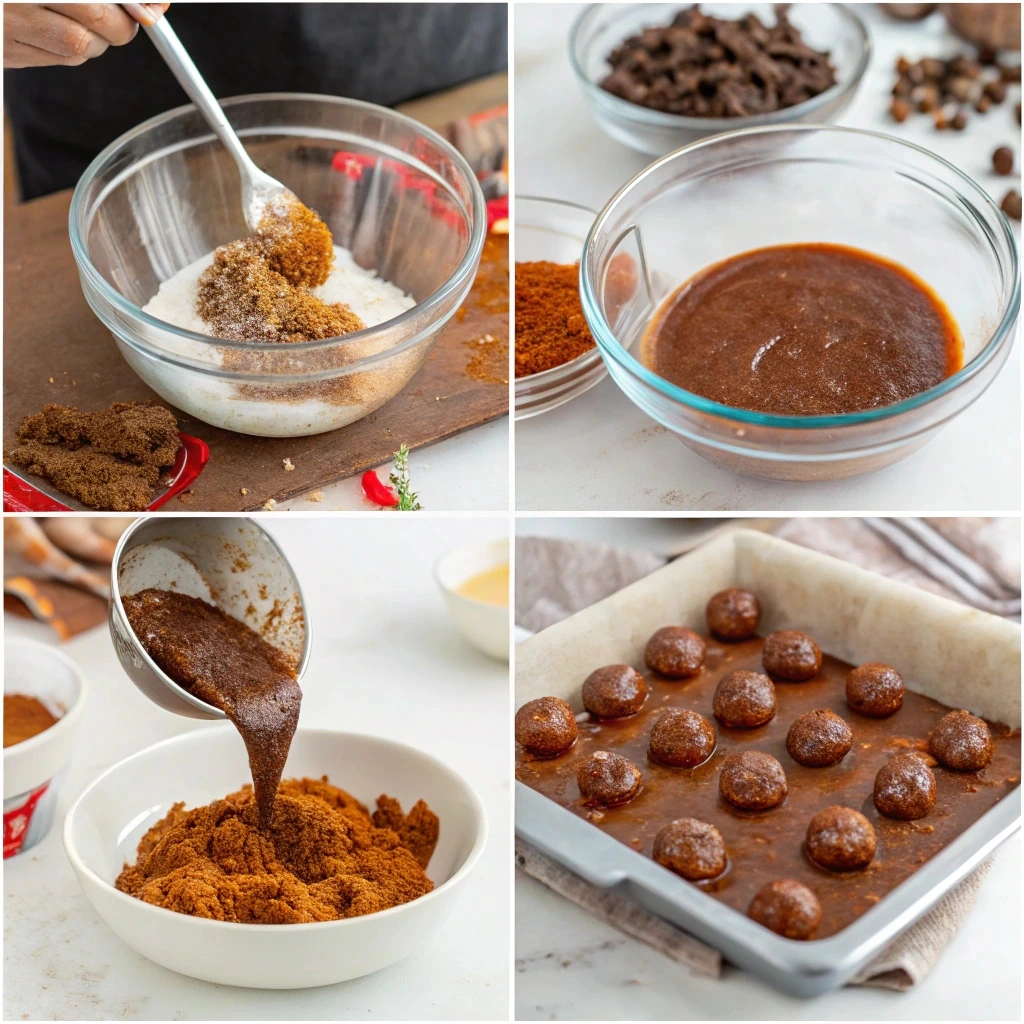
Tips for Adjusting Flavor and Texture
Want to experiment? Go for it! For a softer bite, add a little more water during cooking. Prefer it spicier? Double the chili powder. You can even add crushed peanuts or sesame seeds for texture.
Additionally, some people swap white sugar for jaggery or brown sugar for a deeper flavor. You can also wrap each piece in wax paper for an authentic look.
Homemade tamarind candy isn’t just tasty — it’s totally customizable. And once you get the hang of it, you’ll want to make batch after batch.
Where to Buy Tamarind Candy
Best Online Stores for Tamarind Candy
If you’re craving tamarind candy but can’t find it nearby, don’t worry — the internet’s got you covered. Online stores now make it super easy to enjoy this sweet-and-sour treat no matter where you live. For example, sites like MexGrocer, Lolli & Pops, and Just Asian Food offer a wide range of tamarind-based sweets, from classic Pulparindo bars to artisanal Vietnamese-style tamarind balls.
In addition, you’ll find plenty of variety on larger platforms like Amazon. There, you can compare prices, flavors, and read reviews before placing your order. It’s a great way to explore new brands or try unique flavors, like tamarind with mango or chili-lime twist.
Moreover, many of these stores also sell other exotic snacks, which makes it easier to fill your pantry with exciting new flavors.
Finding It at Local Markets or Asian Grocery Stores
If you prefer to shop in person, head to your local Asian grocery store or Latin American market. Tamarind candy is often found in the snacks aisle or near the register. Brands like Amira, De La Rosa, and Vero are common in these spots, especially in areas with diverse communities.
While availability can vary by location, these markets often carry the freshest and most authentic options. Plus, you can ask the staff for recommendations or try small packs before committing to more.
Therefore, whether you shop online or locally, tamarind candy is never too far away — just a click or a short drive from your next sweet-spicy fix.
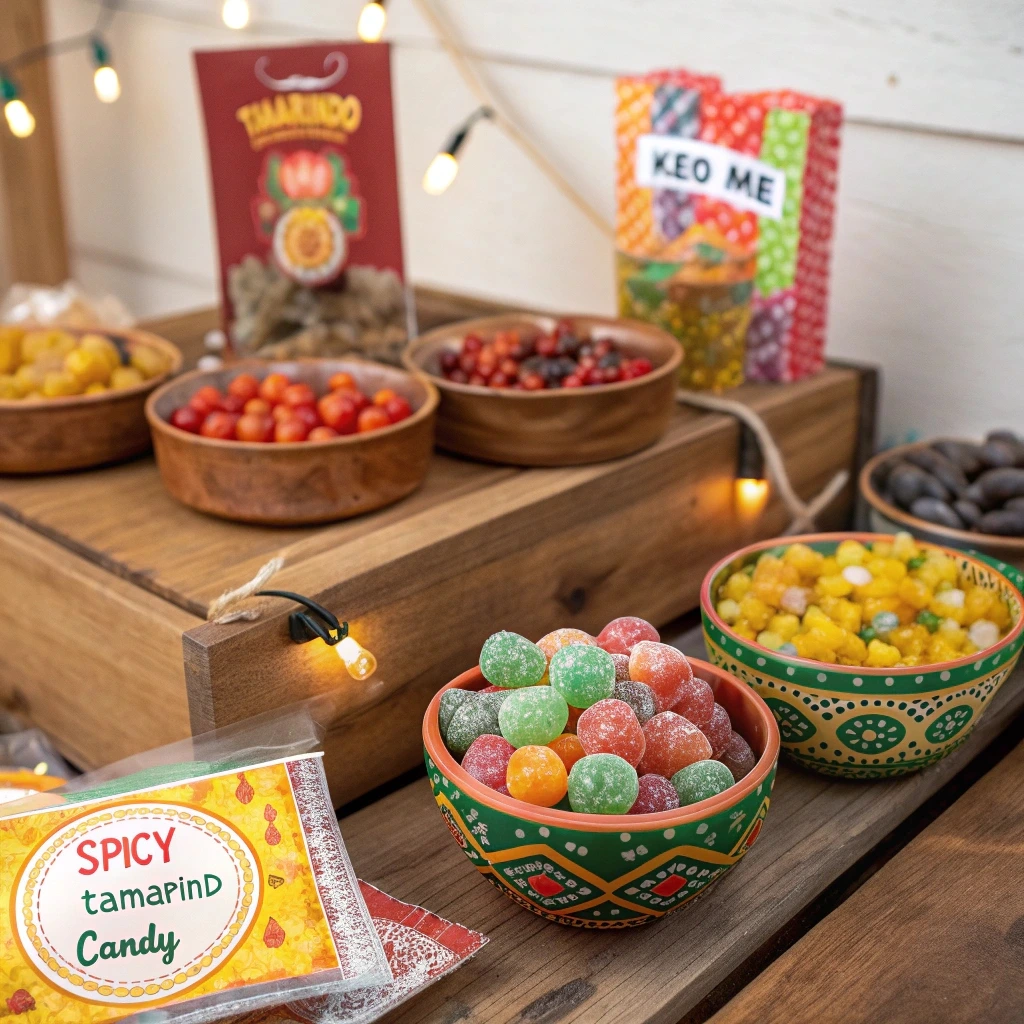
Nutritional Insights and Health Considerations
What’s in Tamarind Candy?
Like many sweets, tamarind candy is best enjoyed in moderation. While tamarind itself is rich in antioxidants, vitamins, and minerals like magnesium and potassium, once it’s turned into candy, things change. The added sugar and salt can quickly bump up the calorie count.
On average, one piece of tamarind candy contains about 60–80 calories, mostly from sugar. However, some versions include chili powder, which adds flavor without extra calories — a small win!
Despite the sugar, tamarind candy can still be a better choice than heavily processed sweets, thanks to its use of fruit pulp.
Safety and the Prop 65 Warning Explained
One concern that pops up is the California Prop 65 warning on some imported candies. This label warns about possible lead content, especially in traditional products made or packaged outside the U.S. While this might sound alarming, the warning is often placed out of caution rather than confirmed danger.
Therefore, if you’re buying from well-known brands or certified retailers, the risk is usually low. Still, it’s wise to check the label and enjoy these candies in small amounts, especially for kids or pregnant women.
In short, tamarind candy is a treat — not a daily vitamin. But with mindful snacking, you can enjoy it safely and deliciously.
Medicinal and Culinary Uses of Tamarind Beyond Candy
Traditional Medicinal Uses
While tamarind candy is often enjoyed as a treat, the tamarind fruit itself has a long history of being used for health purposes. For centuries, people in India, Africa, and Southeast Asia have turned to tamarind to treat digestive issues. In fact, it’s been used as a natural remedy for constipation, diarrhea, and even fever.
Tamarind contains antioxidants, polyphenols, and tartaric acid — all of which may help reduce inflammation. Therefore, many herbal medicine systems consider it a cooling ingredient that helps balance the body’s internal heat. Some traditional remedies also use tamarind pulp to ease sore throats and improve liver health.
Although these uses are rooted in tradition, it’s important to remember that scientific research is still catching up. So, while tamarind might offer wellness perks, it’s best not to rely on tamarind candy for those benefits — especially given its sugar content.
Tamarind in Sauces, Beverages, and Snacks
Beyond sweets, tamarind plays a key role in many global cuisines. For example, in Indian cooking, it’s used in chutneys, curries, and soups. In Thailand, tamarind paste gives pad Thai its signature tang. And in Mexico, it flavors aguas frescas — refreshing drinks perfect for hot days.
Moreover, tamarind appears in Worcestershire sauce and other condiments around the world. It’s even used in savory snacks and pickles. This versatility proves that tamarind is more than a candy base — it’s a kitchen essential.
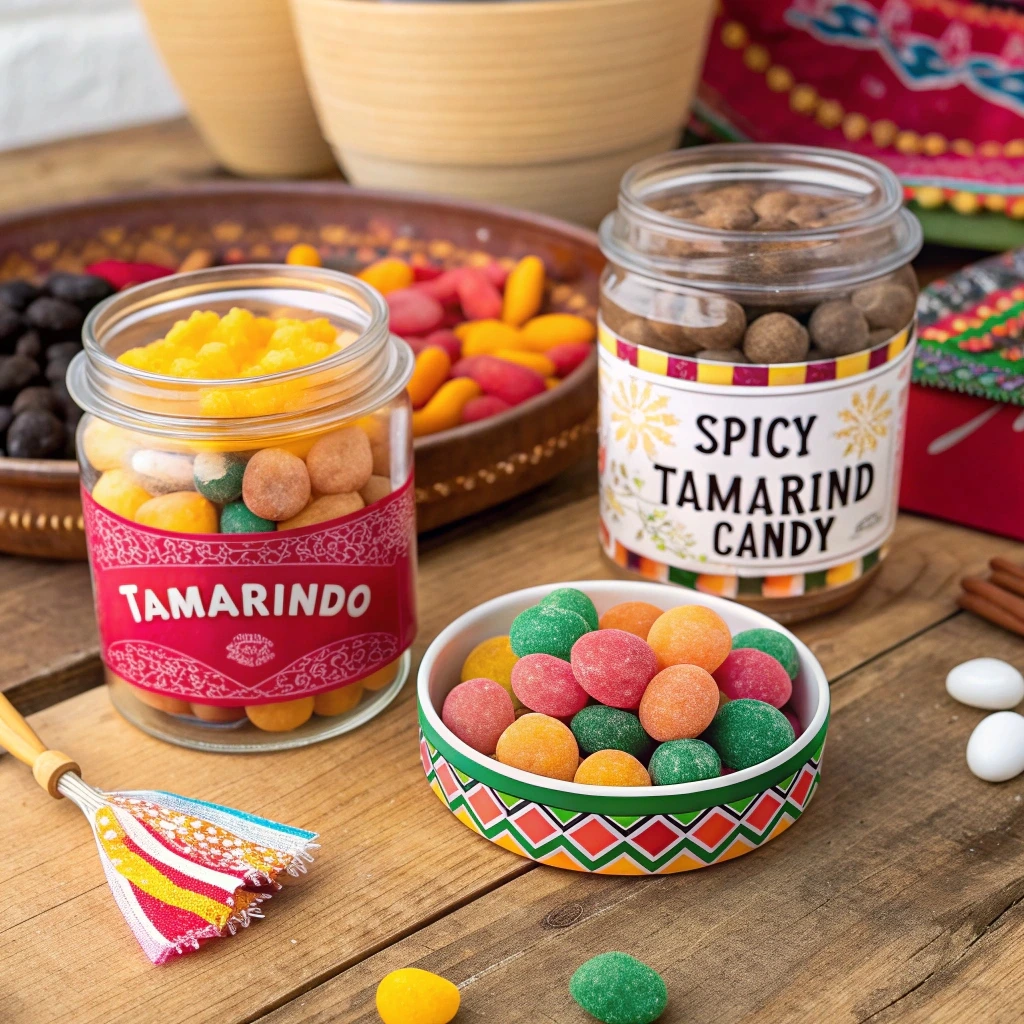
Frequently Asked Questions (FAQs)
What Does Tamarind Candy Taste Like?
Tamarind candy has a bold, unique flavor. It’s sweet, sour, salty, and sometimes spicy — all in one bite. Therefore, it’s perfect for people who enjoy layered, complex tastes. While some find it intense at first, many quickly grow to love it.
Is Tamarind Candy Healthy or Harmful?
In moderation, tamarind candy can be part of a balanced diet. Tamarind pulp contains helpful nutrients, but the added sugar and salt reduce its health value. Moreover, some imported candies may carry Prop 65 warnings due to trace lead exposure, so always buy from trusted brands.
Can You Make Tamarind Candy Without Sugar?
Yes! You can make a natural version using tamarind pulp and a sugar substitute like honey or jaggery. However, it may not last as long, since sugar also acts as a preservative.
Is Tamarind Candy Safe for Children?
Generally, yes — but with caution. The bold flavors might be too intense for young kids, and some versions contain spicy chili powder. Also, double-check for any allergy warnings.
Why Is Tamarind Candy Popular in Mexico and Asia?
Tamarind is native to tropical climates and has been used in these regions for centuries. Its bold taste, combined with sugar and spice, fits the flavor profiles of both Mexican sweets and Asian sour candy perfectly. That’s why tamarind candy remains a beloved treat across cultures.

